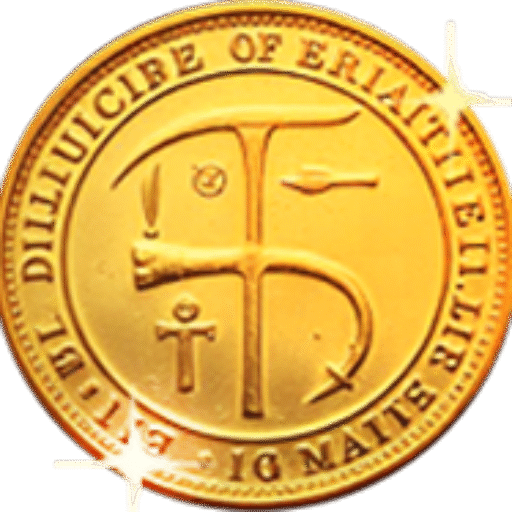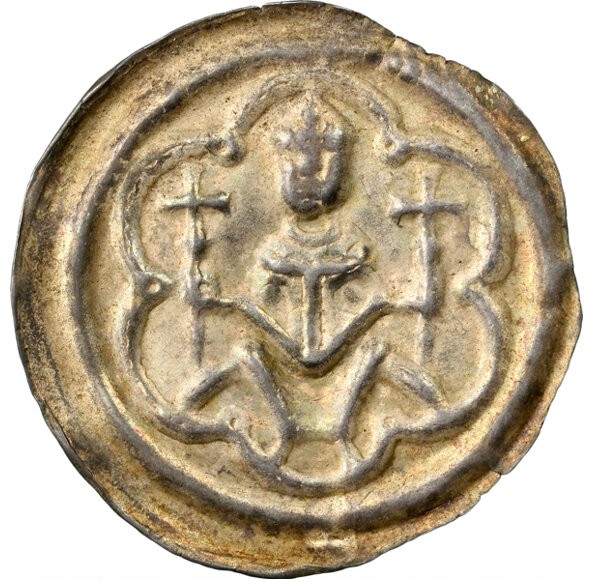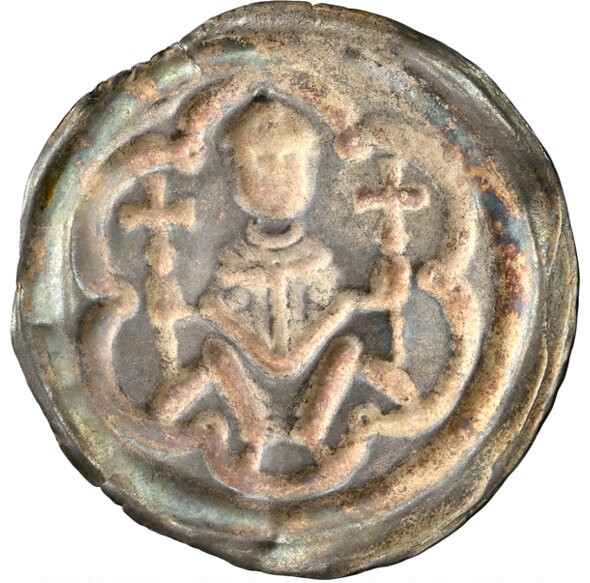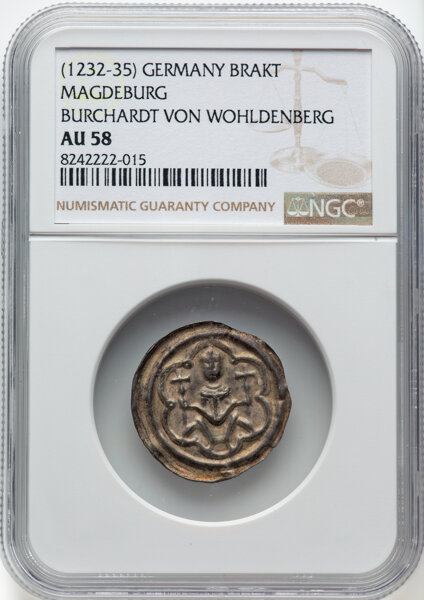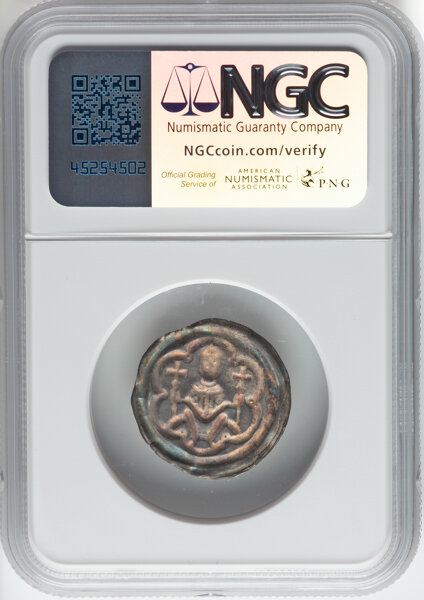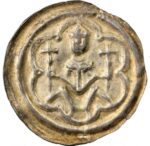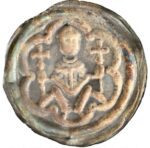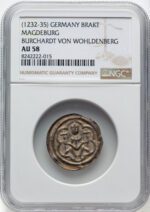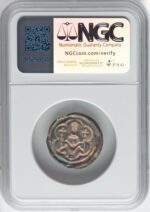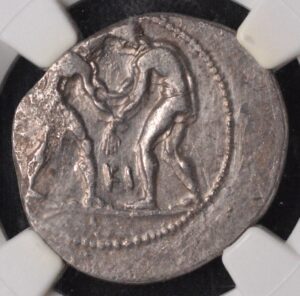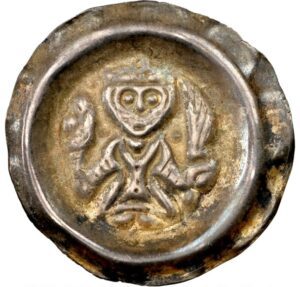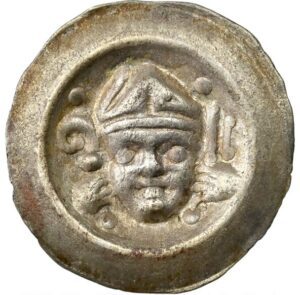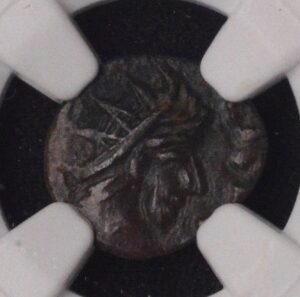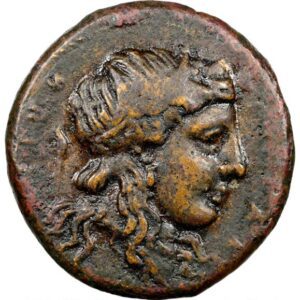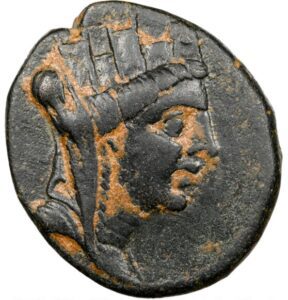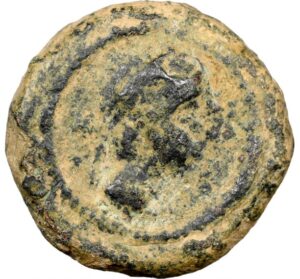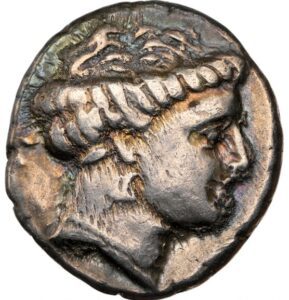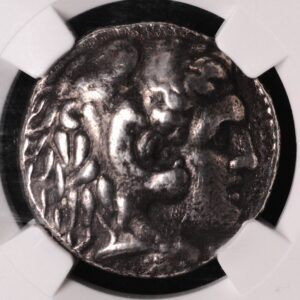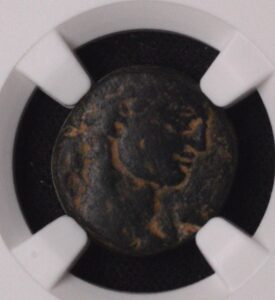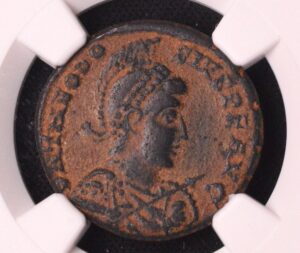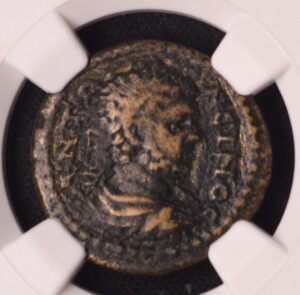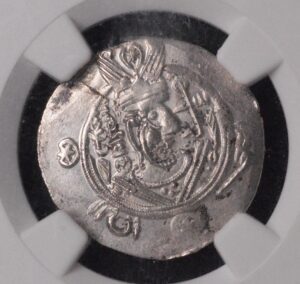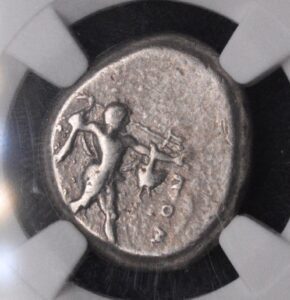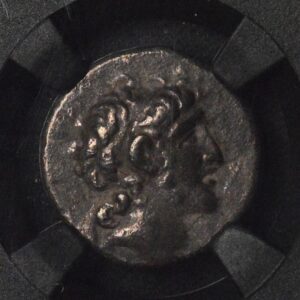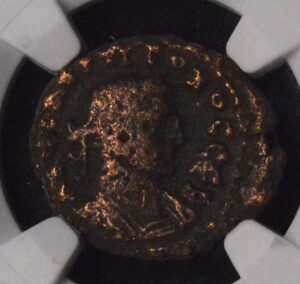Description
The Magdeburg bracteate from the episcopate of Burchardt von Wohldenberg (1232–1235) is a medieval silver coin representing the Archbishopric of Magdeburg, one of the most influential ecclesiastical territories in the Holy Roman Empire. Minted during a short episcopal reign, it exemplifies the bracteate tradition of the 13th century—thin, single-sided coins struck in fine silver, characterized by high-relief designs and incuse reverses.
This particular type, measuring about 23 millimeters in diameter and weighing approximately 0.7 grams, shows the bishop enthroned or standing frontally, holding a crozier (pastoral staff) in one hand and a cross-staff or book in the other, symbolizing his dual authority in both religious and civic governance. The bishop’s figure appears between two towers, likely representing the city or cathedral of Magdeburg, surrounded by a circular border of crescents or dots. The reverse, as standard for bracteates, remains hollowed by the striking process.
The Burchardt von Wohldenberg bracteates are extremely scarce due to the short duration of his office and the fragile nature of this coinage. Most surviving examples exhibit some degree of bending or weakness along the edges, caused by the wafer-thin flans and medieval striking techniques. An NGC AU58-graded specimen, however, represents an outstanding preservation state, retaining full design clarity, well-defined portraiture, and original medieval surfaces nearly free of the structural deformities common in this type.
Historically, Magdeburg was among the leading ecclesiastical centers of the empire, and its bishops were key political figures. Coinage from its archbishops, especially early 13th-century bracteates, reflects both religious iconography and urban symbolism. The von Wohldenberg issue stands out within that tradition for its balanced composition and fine engraving style, which documents the transition from Romanesque to early Gothic aesthetics in northern German mint art.
In summary, the Magdeburg bracteate of Burchardt von Wohldenberg (1232–1235) combines artistry, historical depth, and rarity. Well-struck and certified examples like this one highlight the remarkable sophistication achieved by medieval German ecclesiastical mints at a time when coinage also served as both currency and religious expression.
The Magdeburg bracteate from the episcopate of Burchardt von Wohldenberg (1232–1235) is a medieval silver coin representing the Archbishopric of Magdeburg, one of the most influential ecclesiastical territories in the Holy Roman Empire. Minted during a short episcopal reign, it exemplifies the bracteate tradition of the 13th century—thin, single-sided coins struck in fine silver, characterized by high-relief designs and incuse reverses.
This particular type, measuring about 23 millimeters in diameter and weighing approximately 0.7 grams, shows the bishop enthroned or standing frontally, holding a crozier (pastoral staff) in one hand and a cross-staff or book in the other, symbolizing his dual authority in both religious and civic governance. The bishop’s figure appears between two towers, likely representing the city or cathedral of Magdeburg, surrounded by a circular border of crescents or dots. The reverse, as standard for bracteates, remains hollowed by the striking process.
The Burchardt von Wohldenberg bracteates are extremely scarce due to the short duration of his office and the fragile nature of this coinage. Most surviving examples exhibit some degree of bending or weakness along the edges, caused by the wafer-thin flans and medieval striking techniques. An NGC AU58-graded specimen, however, represents an outstanding preservation state, retaining full design clarity, well-defined portraiture, and original medieval surfaces nearly free of the structural deformities common in this type.
Historically, Magdeburg was among the leading ecclesiastical centers of the empire, and its bishops were key political figures. Coinage from its archbishops, especially early 13th-century bracteates, reflects both religious iconography and urban symbolism. The von Wohldenberg issue stands out within that tradition for its balanced composition and fine engraving style, which documents the transition from Romanesque to early Gothic aesthetics in northern German mint art.
In summary, the Magdeburg bracteate of Burchardt von Wohldenberg (1232–1235) combines artistry, historical depth, and rarity. Well-struck and certified examples like this one highlight the remarkable sophistication achieved by medieval German ecclesiastical mints at a time when coinage also served as both currency and religious expression.
The Magdeburg bracteate from the episcopate of Burchardt von Wohldenberg (1232–1235) is a medieval silver coin representing the Archbishopric of Magdeburg, one of the most influential ecclesiastical territories in the Holy Roman Empire. Minted during a short episcopal reign, it exemplifies the bracteate tradition of the 13th century—thin, single-sided coins struck in fine silver, characterized by high-relief designs and incuse reverses.
This particular type, measuring about 23 millimeters in diameter and weighing approximately 0.7 grams, shows the bishop enthroned or standing frontally, holding a crozier (pastoral staff) in one hand and a cross-staff or book in the other, symbolizing his dual authority in both religious and civic governance. The bishop’s figure appears between two towers, likely representing the city or cathedral of Magdeburg, surrounded by a circular border of crescents or dots. The reverse, as standard for bracteates, remains hollowed by the striking process.
The Burchardt von Wohldenberg bracteates are extremely scarce due to the short duration of his office and the fragile nature of this coinage. Most surviving examples exhibit some degree of bending or weakness along the edges, caused by the wafer-thin flans and medieval striking techniques. An NGC AU58-graded specimen, however, represents an outstanding preservation state, retaining full design clarity, well-defined portraiture, and original medieval surfaces nearly free of the structural deformities common in this type.
Historically, Magdeburg was among the leading ecclesiastical centers of the empire, and its bishops were key political figures. Coinage from its archbishops, especially early 13th-century bracteates, reflects both religious iconography and urban symbolism. The von Wohldenberg issue stands out within that tradition for its balanced composition and fine engraving style, which documents the transition from Romanesque to early Gothic aesthetics in northern German mint art.
In summary, the Magdeburg bracteate of Burchardt von Wohldenberg (1232–1235) combines artistry, historical depth, and rarity. Well-struck and certified examples like this one highlight the remarkable sophistication achieved by medieval German ecclesiastical mints at a time when coinage also served as both currency and religious expression.
CUSTOMER FEEDBACK




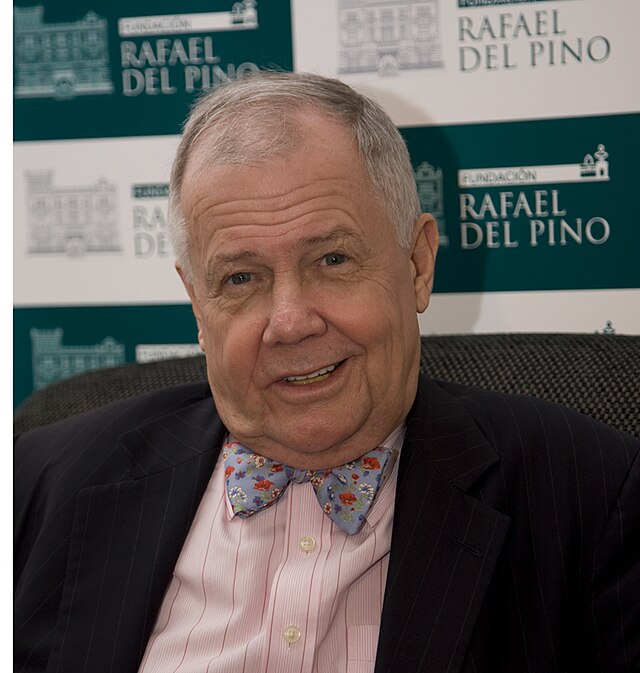



Related Products & Newly Released!
-
$400.00




SHIPPING POLICY
Your order is shipped from the United States with USPS tracking within one business day.
14 Day Return Policy
You can return your item back within
14 days of the purchase

Secure payments
Your payments are 100% secure and are processed through Square or PayPal on a protected security network.
SHIPPING POLICY
FREE International and Domestic (United States) shipping. Your order is shipped with USPS tracking 24 hours after you order.
14 Day Return Policy
You can return your item back within
14 days of the purchase

Secure payments
Your payments are 100% secure and are processed through Square or PayPal on a protected security network.
RESOURCES
support
Get Fresh Articles!
Sign up now to receive our articles for the latest insights and promotions!
RESOURCES
support
Get Fresh Articles!
Signup our newsletter to get update insight or promotions.

